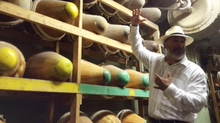Manufacturing Diversification
Today’s business environment is experiencing an unprecedented siege of outside influences such as the global pandemic, industry consolidation, supply chain interruption, complicated import/export market dynamics, and labor dynamics never before experienced. The shifting dynamics characteristic of these environments and their corresponding market responses have introduced exposure to new “risk”. Firms, to successfully manage positioning in their marketplace, must look at diversification as a strategy to insulate their exposure, drive out risk, and strengthen their positioning. Many companies, at the point of making decisions around diversification, are already in trouble and may be symptomatic of early turnaround candidates.

COVID 19 has introduced rapidly changing business dynamics. Much like sequestrations effect on the DoD supply chains, we are seeing the need for companies to diversify in order to remain viable, relevant, manage risk, and stabilize their management control over their production and sales. For example, while some distilleries have switched production to hand sanitizer to drive sales, others have shifted gears to meet the personal protective equipment (PPE) needs statewide. Prior to COVID, SEWN had seen five main reasons a company sought diversification:
An industry is undergoing a structural shift
A company is distressed and needs major financial and/or operational restructuring
Merger Integration: When two companies are challenged with combining resources to function as a single entity.
Industry consolidations
Rapid growth which requires an increase in revenue or market share that requires new products or market opportunities.
Diversification is a strategic business discipline which requires the business to utilize market intelligence, financial modeling, market analysis, and market positioning to test and support marketplace assumptions on new products, services, and positioning. This process drives out risk and protects capital. It also tests assumptions allowing complex business decisions to be made. This market-based intelligence is used to define and clarify potential opportunities in a portfolio of competing ideas and provides the critical components that inform the decision-making process and galvanizes the various businesses streams into a diversified strategy. Bottom line: it’s to increase profitability and decrease risk.
When a client comes to SEWN looking to diversify, we take several steps:
Do an initial company and readiness assessment. A review of company financials, operational structure, culture and leadership capabilities and performance sets the stage for work.
Provide a current state analysis. SEWN staff will then present recommendations for business positioning, financial and/or operational restructuring, sales and marketing strategies, and best practices to execute a critical pathway through culture and the current leadership.
Focus on diversification planning. SEWN strategically uses the company information to define the scope of the strategic approach. Conducting an opportunity analysis, we provide comprehensive market intelligence to assist the company in positioning themselves for the new venture.
SEWN’s approach manages or reduces risk inherent to new market or business development prior to allocating resources or expending funds on capital. Filling market gaps in capabilities and structured expertise in diversification is fundamental to the vitality of the manufacturing base in Pennsylvania. Let SEWN dialogue with your company to determine if diversification planning is for you, it is free and confidential.




















